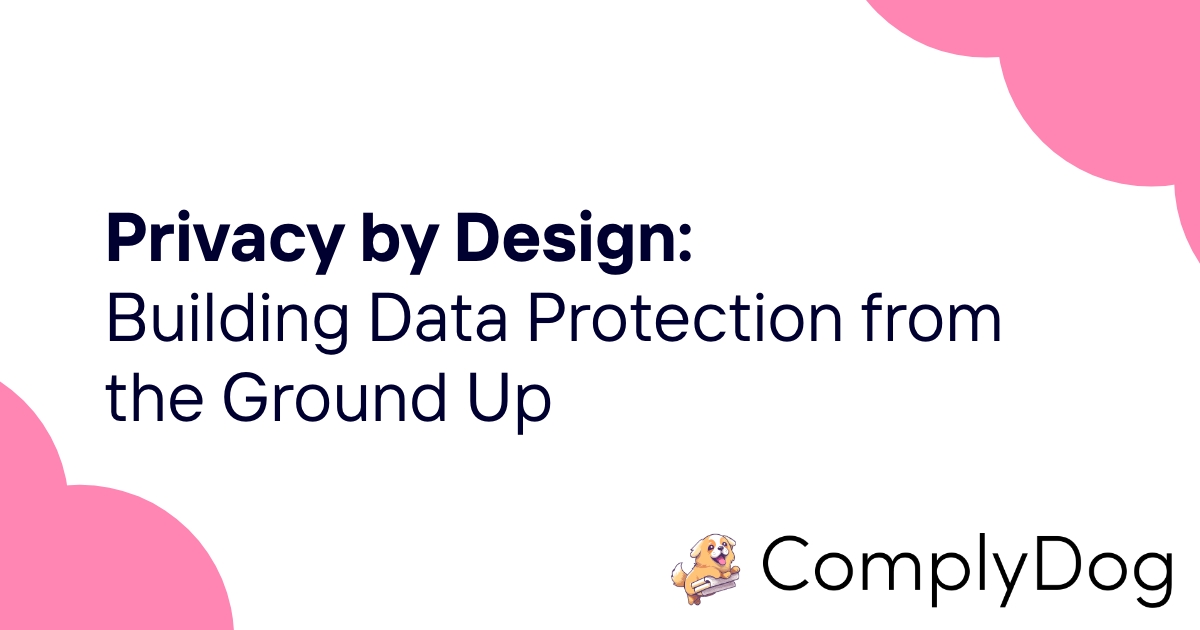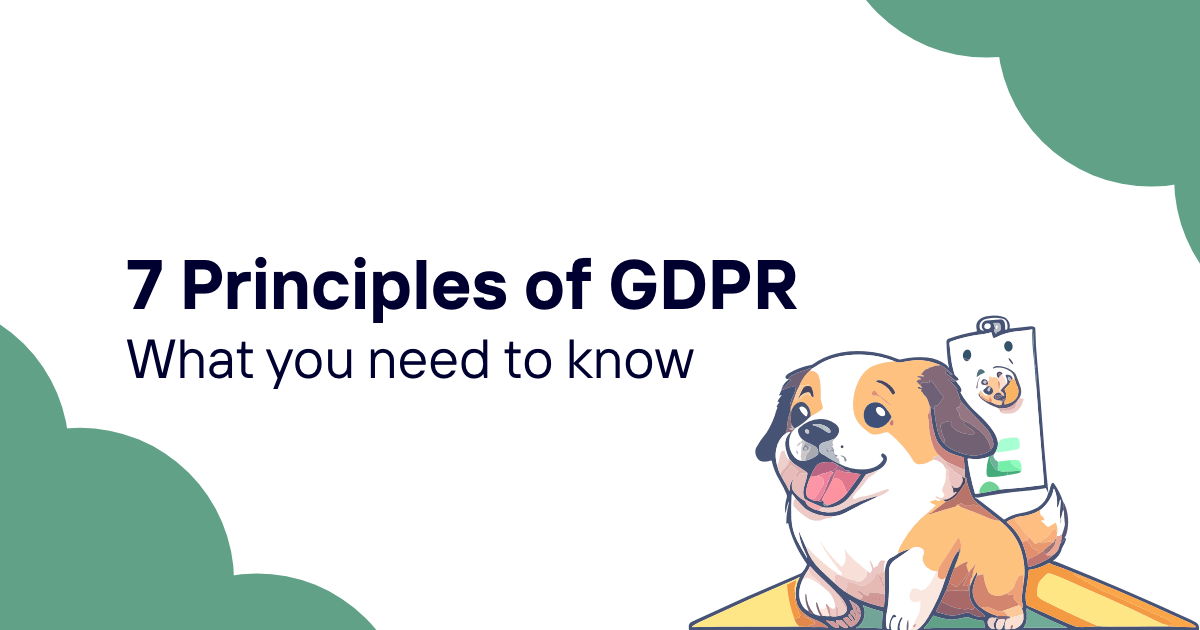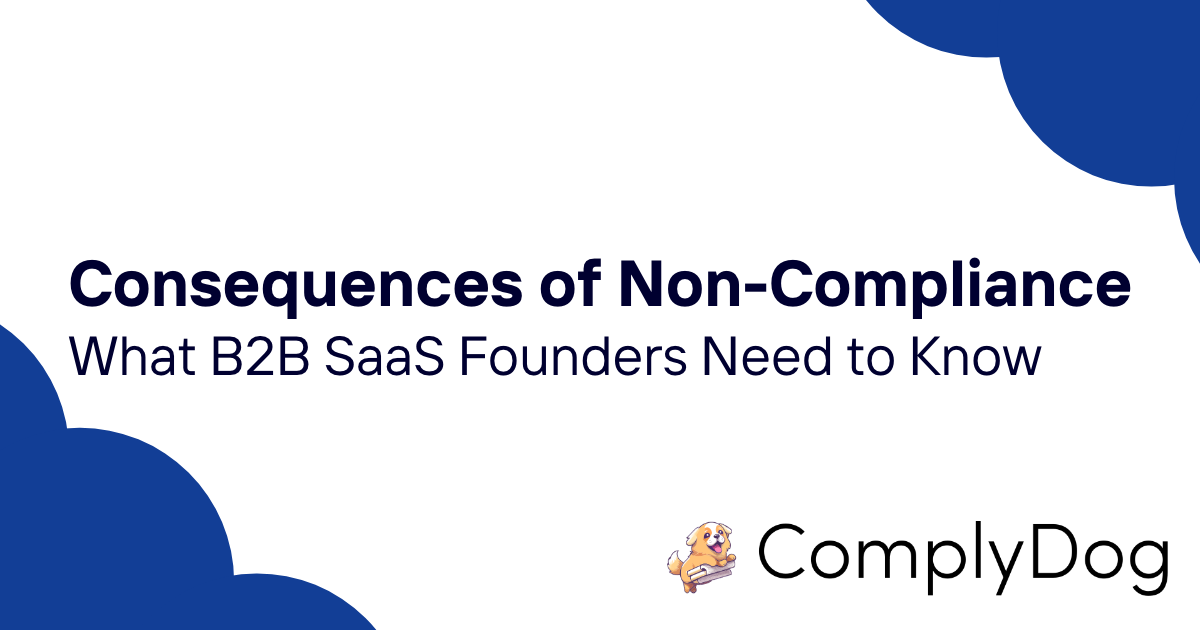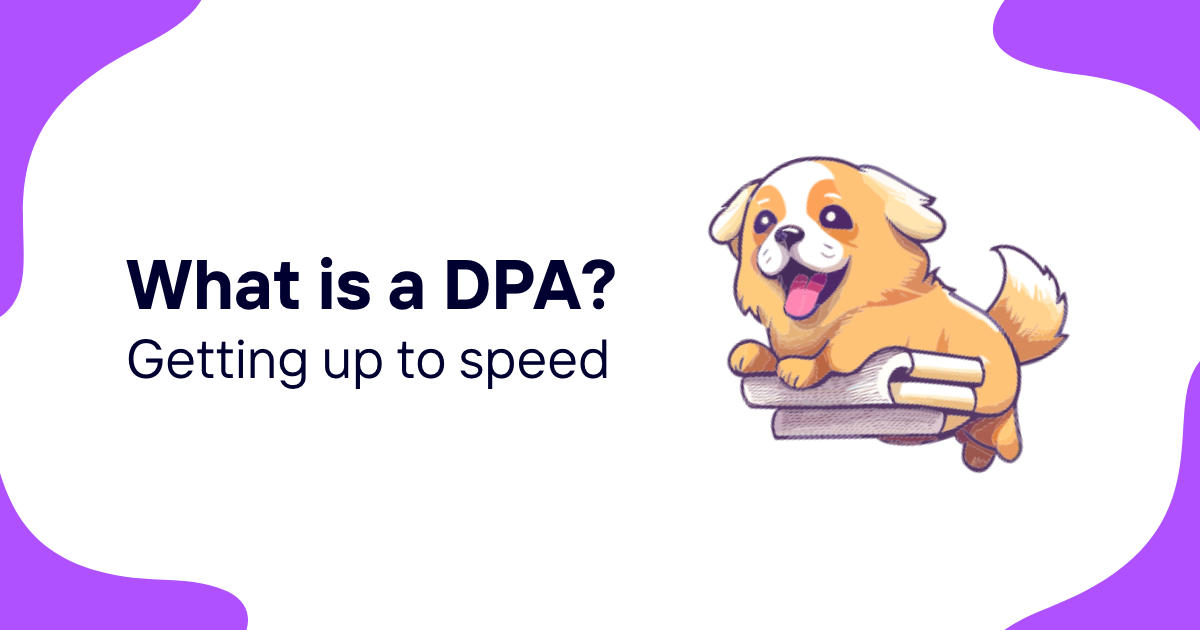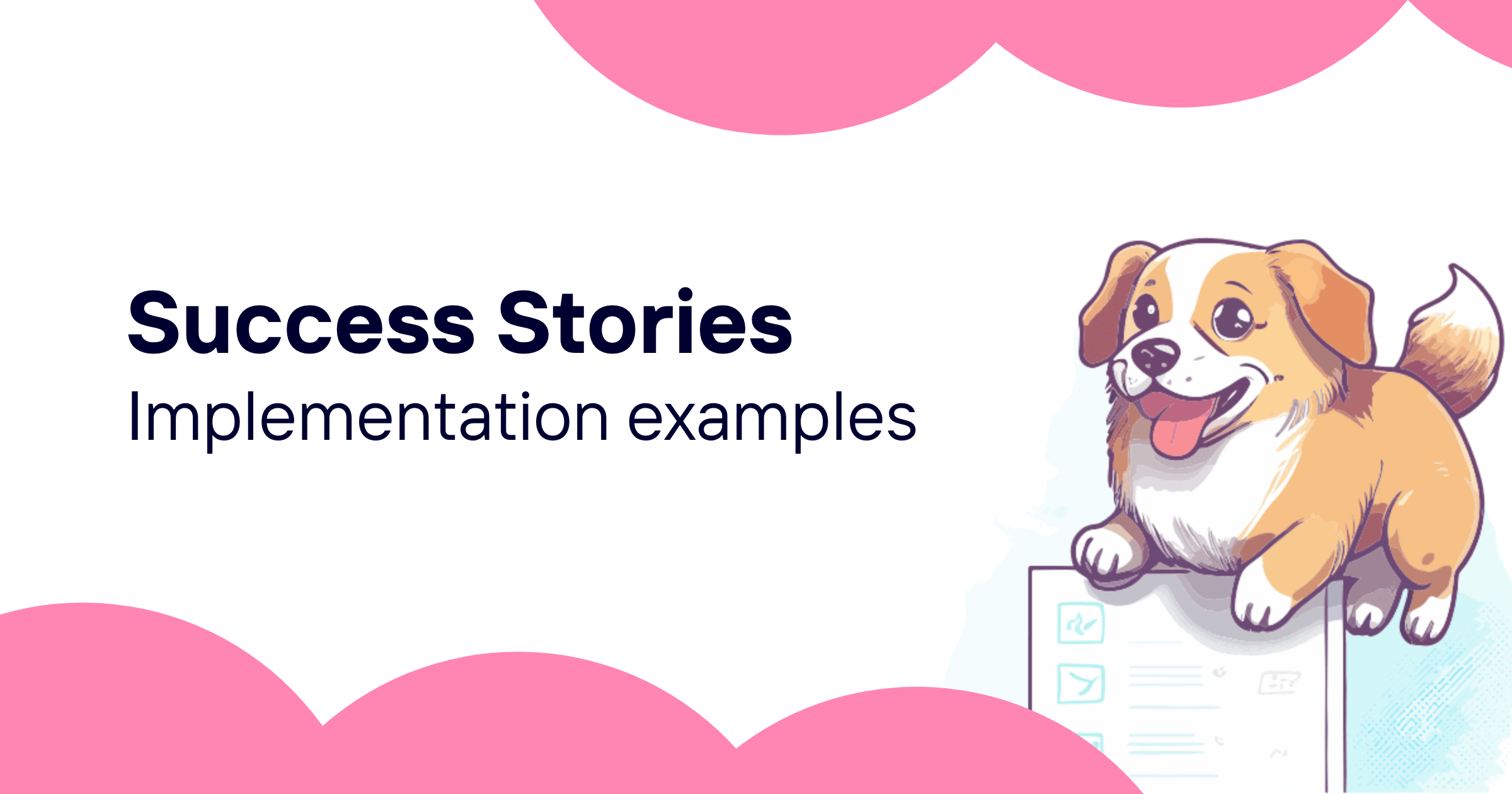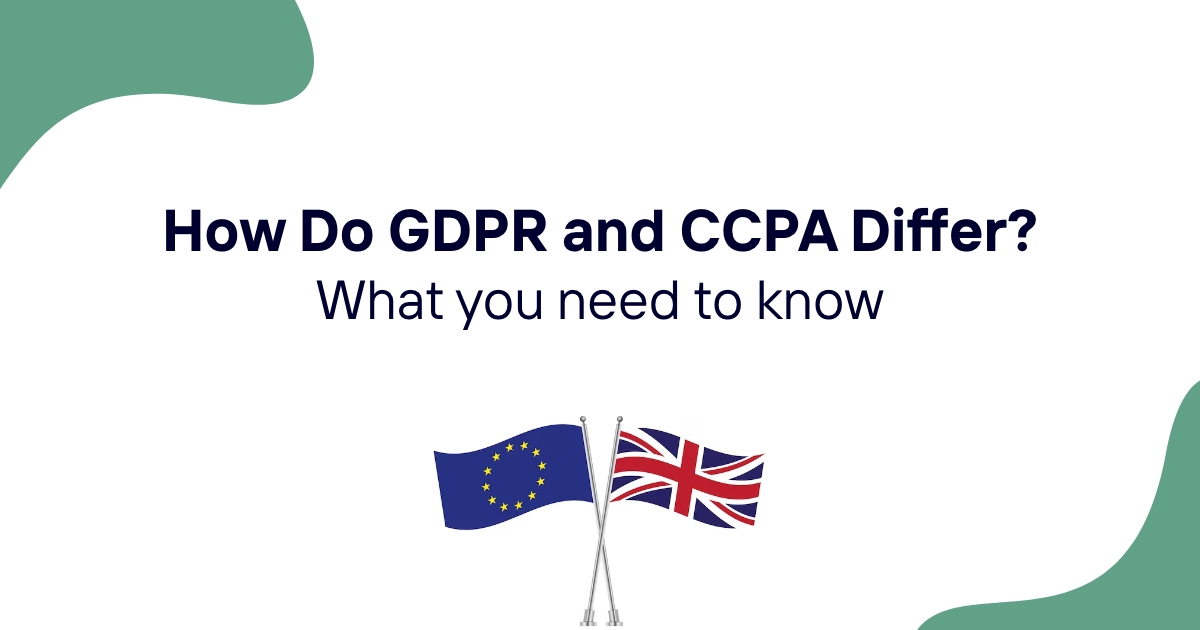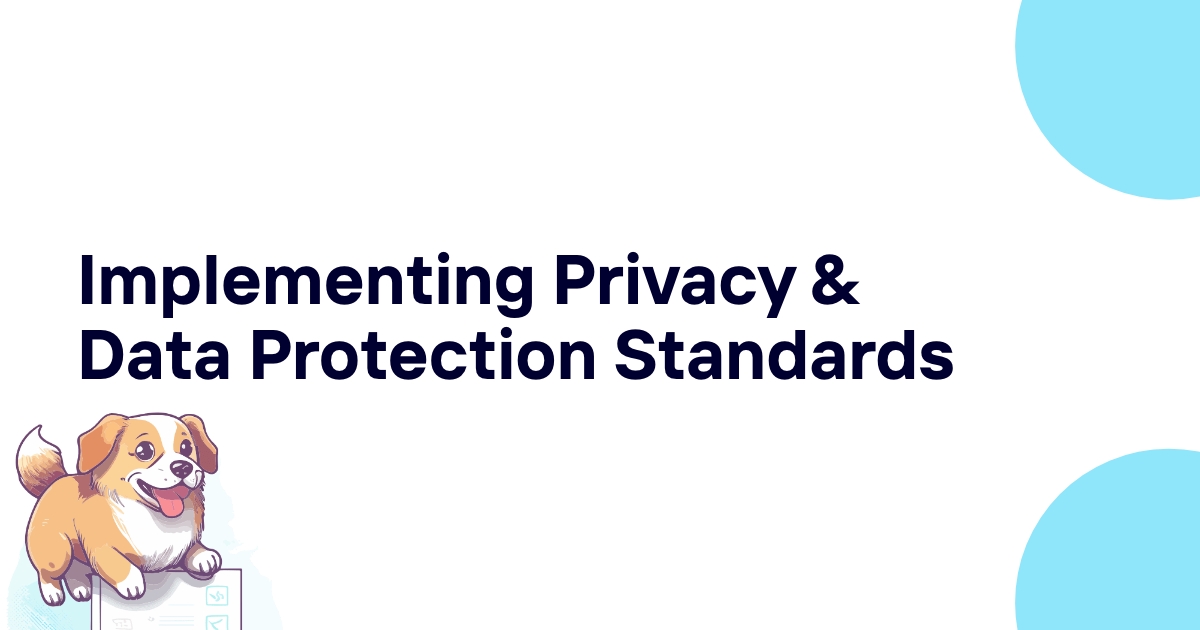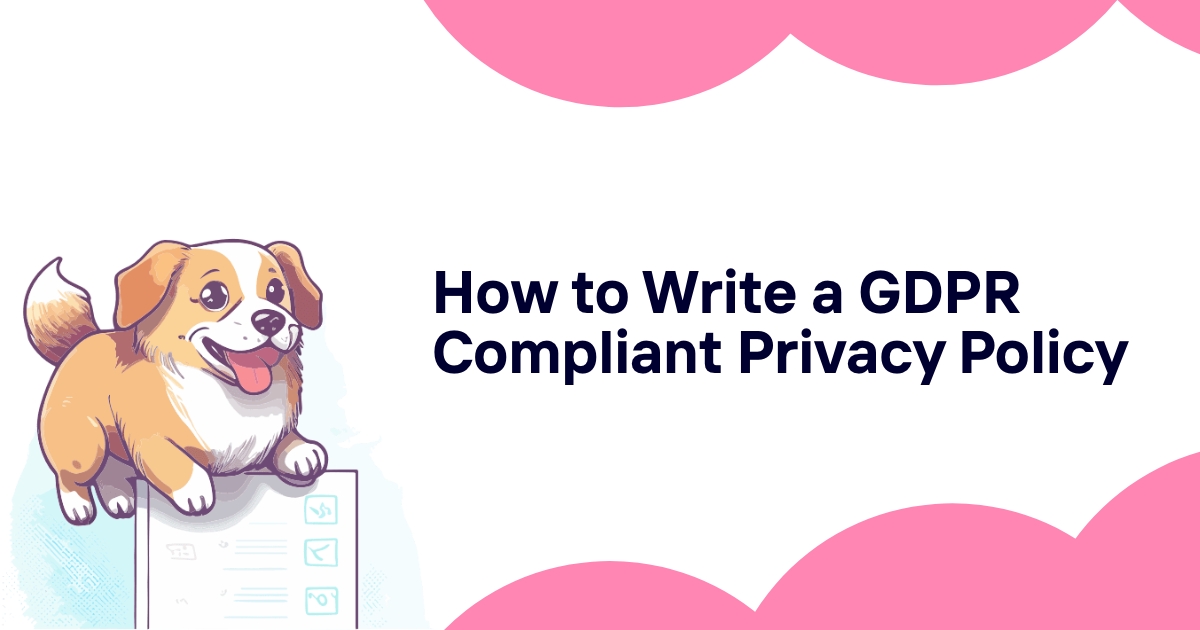In the world of data protection, "privacy by design" isn't just another buzzword—it's a fundamental approach that shapes how organizations handle personal information. Having spent years advising companies on data protection strategies, I've seen firsthand how this concept transforms organizational thinking about privacy.
Privacy by design means exactly what it sounds like: building privacy protections into your systems, processes, and business practices from the ground up rather than tacking them on as an afterthought. It's about making privacy an essential component of how your organization functions.
Let me walk you through what privacy by design really means, why it matters more than ever in today's data-driven landscape, and how to implement it effectively in your organization.
Table of contents
- What is privacy by design?
- The 7 foundational principles
- Why privacy by design matters now
- Implementing privacy by design
- Privacy by design and GDPR
- Common challenges and how to overcome them
- The business benefits
- Technology considerations for privacy by design
- Conclusion
What is privacy by design?
Privacy by design is a framework developed by Dr. Ann Cavoukian, former Information and Privacy Commissioner of Ontario, Canada. At its core, it's about integrating privacy into the design and operation of IT systems, business practices, and physical designs.
This approach ensures that privacy isn't treated as an add-on feature but is built into the very fabric of products, services, and systems from the earliest stages of development. It's a proactive approach to privacy that prevents problems before they occur.
Rather than reacting to privacy breaches after they happen, organizations that embrace privacy by design anticipate and prevent privacy-invasive events before they occur. It's like building a house with solid foundations rather than trying to fix structural issues after the house is built.
Privacy by design applies to:
- System designs
- Business practices
- Product development
- Network and physical infrastructures
- Organizational priorities
I've found that organizations that bake privacy into their DNA from the start have a much easier time maintaining compliance with regulations like GDPR. They also build stronger trust with their customers, which is increasingly becoming a competitive advantage.
The 7 foundational principles
The privacy by design framework is built around seven key principles. Let's break down each one:
Principle 1: Proactive not reactive
This principle emphasizes preventing privacy issues before they happen, rather than offering remedies after violations have occurred.
Instead of waiting for privacy risks to materialize and then scrambling to address them, organizations should proactively identify potential privacy issues during the planning stages of any project or initiative. This involves regularly conducting privacy impact assessments, threat modeling, and risk analyses.
I've seen companies save countless hours and resources by identifying privacy concerns early in the development process. Making changes at the design stage is far less costly than retrofitting systems after they're built.
A proactive approach might include:
- Privacy brainstorming sessions during initial project planning
- Regular privacy training for all staff
- Establishing privacy review checkpoints throughout development
- Creating privacy champions within different departments
Principle 2: Privacy as the default setting
This principle means that privacy protections are built into systems automatically, with no action required from individuals.
When users engage with your product or service, the highest privacy protection should already be in place without them having to change any settings. This "opt-in" rather than "opt-out" approach means that if a user does nothing, their privacy remains protected.
This principle covers several key areas:
- Collection limitation: Only collect the minimum amount of personal data necessary for your stated purpose.
- Data minimization: If you don't need a piece of data, don't collect it in the first place.
- Purpose specification: Clearly define why you're collecting each piece of data.
- Use limitation: Only use data for the specific purpose you collected it for.
- Retention limitation: Don't keep data longer than necessary.
For example, if your app doesn't need access to a user's location to function properly, don't ask for that permission by default. If you offer personalization features that require additional data, make those features opt-in rather than opt-out.
Principle 3: Privacy embedded into design
Privacy should be an integral component of the design and architecture of systems and business practices, not bolted on as an afterthought.
This means that privacy considerations should influence every design decision. Privacy becomes a core requirement, similar to functionality, performance, or security. It's woven into the system architecture and business practices from the ground up.
In practical terms, this might look like:
- Including privacy requirements in product specifications
- Making privacy a criterion in vendor selection
- Incorporating privacy checkpoints in the development process
- Building data protection features directly into system architecture
- Designing user interfaces that make privacy options clear and accessible
The beauty of this approach is that when privacy is embedded into design, it doesn't impede innovation or functionality—it simply becomes part of the foundation upon which you build.
Principle 4: Full functionality
This principle focuses on pursuing positive-sum, win-win solutions rather than unnecessary trade-offs.
For too long, privacy has been framed as being at odds with innovation, security, or functionality. The full functionality principle rejects this false dichotomy. It asserts that we can have both privacy and full functionality—it's not an either/or proposition.
This principle encourages organizations to find creative solutions that satisfy multiple legitimate objectives simultaneously. For instance:
- A ride-sharing app can provide drivers with enough information to pick up passengers without sharing the passenger's full name or contact details
- A social media platform can offer personalized content while still giving users granular control over their data
- A healthcare app can provide valuable insights without exposing individual patient records
I call this the "yes, and" approach rather than the "either/or" mindset. It requires more thoughtful design but results in better outcomes for everyone involved.
Principle 5: End-to-end security
This principle ensures that all data is securely retained throughout its lifecycle and then securely destroyed at the end of the process.
Strong security is essential for privacy, but privacy goes beyond security. This principle addresses the need to protect data from collection through processing, storage, and eventual deletion.
End-to-end security includes:
- Secure collection methods
- Encryption during transit and at rest
- Access controls and authentication
- Secure data processing practices
- Safe data sharing protocols
- Proper data destruction procedures
The key is ensuring that security isn't just focused on preventing external threats but also addresses internal risks and the entire data lifecycle. A data breach can happen at any point in this lifecycle, so protection must be comprehensive.
Principle 6: Visibility and transparency
This principle focuses on operating in an open, honest way regarding your data practices.
Organizations should document their privacy policies and procedures and make them available to stakeholders. This transparency builds trust and ensures accountability.
Key elements of visibility and transparency include:
- Clear, accessible privacy policies
- Plain language descriptions of data practices
- Notification of any changes to data practices
- Open communication about how data is used
- Mechanisms for individuals to verify compliance
- Regular privacy compliance reports
I've found that companies that excel at transparency tend to build stronger customer relationships. When people understand what's happening with their data, they're more likely to trust an organization with it.
Principle 7: Respect for user privacy
This final principle places the individual at the center of privacy considerations.
Privacy by design requires keeping the interests of the individual uppermost by offering strong privacy defaults, appropriate notice, and user-friendly options. This principle acknowledges that while organizations may be the custodians of personal data, individuals remain the owners of their personal information.
Practical applications include:
- Obtaining meaningful consent before collecting data
- Providing easy-to-use privacy controls
- Respecting user preferences consistently
- Offering clear ways for users to access their data
- Creating simple processes for updating or deleting data
- Designing intuitive privacy interfaces
This principle is particularly important in building trust. When users feel their privacy choices are respected, they're more likely to engage with your product or service.
Why privacy by design matters now
Privacy by design has always been important, but several factors make it particularly crucial today:
-
Increasing data collection: The volume of personal data being collected has grown exponentially, creating more privacy risks.
-
Regulatory requirements: Regulations like GDPR explicitly require privacy by design and by default.
-
Consumer awareness: People are increasingly concerned about their privacy and how organizations handle their data.
-
Technological advancement: Technologies like AI, IoT, and big data analytics create new privacy challenges that need to be addressed proactively.
-
Business reputation: Privacy breaches can severely damage brand reputation and customer trust.
A Pew Research Center survey found that 81% of Americans believe they have very little or no control over the data companies collect about them, and 79% are concerned about how companies use this data. This growing awareness means that privacy isn't just a regulatory requirement—it's becoming a market demand.
In my experience, organizations that adopt privacy by design gain a competitive advantage. They build stronger customer relationships, avoid costly remediation efforts, and position themselves well for compliance with current and future regulations.
Implementing privacy by design
Implementing privacy by design requires a systematic approach. Here's how to get started:
Conducting privacy impact assessments
Privacy Impact Assessments (PIAs) are structured processes for identifying and mitigating privacy risks. They should be conducted early in the development of new products, services, or features.
A good PIA will:
- Identify what personal data will be collected
- Assess how the data will be used, stored, and shared
- Evaluate potential privacy risks
- Determine how to mitigate those risks
- Document privacy protection measures
PIAs should be living documents that are updated as projects evolve. They're not just checkboxes for compliance but valuable tools for improving design.
Building cross-functional teams
Privacy can't be the responsibility of just one department or person. Effective privacy by design requires collaboration across teams.
Consider creating a privacy council that includes representatives from:
- Legal
- IT and security
- Product development
- Marketing
- Customer service
- Data science
This approach ensures that privacy considerations are integrated throughout the organization and that different perspectives are considered.
Creating privacy-enhancing technologies
Technology can be part of the solution to privacy challenges. Privacy-enhancing technologies (PETs) can help protect personal data while still allowing for its beneficial use.
Examples of PETs include:
- Data minimization techniques
- Anonymization and pseudonymization tools
- Encryption methods
- Access controls
- Privacy-preserving analytics
The best PETs are those that protect privacy while maintaining functionality and user experience.
Developing privacy policies and procedures
Clear policies and procedures help ensure consistent application of privacy principles across an organization.
Key documents to develop include:
- Privacy policies (both internal and customer-facing)
- Data handling procedures
- Data breach response plans
- Data retention schedules
- Privacy training materials
These documents should be written in clear, accessible language and regularly updated to reflect changes in practices or regulations.
Privacy by design and GDPR
The General Data Protection Regulation (GDPR) explicitly requires privacy by design and by default in Article 25. This inclusion in a major regulation underscores the importance of this approach.
Under GDPR, organizations must:
- Implement appropriate technical and organizational measures to protect data subject rights
- Ensure that, by default, only personal data necessary for each specific purpose is processed
- Apply data minimization principles to collection, processing, storage, and accessibility
For example, if you're developing a mobile app, GDPR compliance through privacy by design might mean:
- Only collecting location data when the app is in use and the feature requires it
- Automatically anonymizing user data after a certain period
- Building in straightforward processes for users to download or delete their data
- Ensuring data is encrypted both in transit and at rest
Implementing privacy by design helps create a foundation for GDPR compliance, though it's important to note that it's just one component of a comprehensive compliance strategy.
Common challenges and how to overcome them
Implementing privacy by design isn't without challenges. Here are some common obstacles and strategies to address them:
Challenge 1: Balancing privacy with business objectives
Some organizations view privacy as a constraint on innovation or business growth. This perspective can create resistance to privacy by design initiatives.
Solution: Demonstrate how privacy can be a business enabler rather than a roadblock. Use case studies of companies that have successfully implemented privacy by design and gained competitive advantage as a result. Also, involve business stakeholders early in the process to address concerns and find mutually acceptable solutions.
Challenge 2: Retrofitting existing systems
It's often easier to implement privacy by design in new systems than to retrofit legacy systems that weren't designed with privacy in mind.
Solution: Create a phased approach to upgrading legacy systems, prioritizing those that process the most sensitive data. When complete redesign isn't feasible, look for compensating controls that can enhance privacy protection within existing constraints.
Challenge 3: Keeping up with evolving regulations
Privacy regulations continue to evolve, making compliance a moving target.
Solution: Focus on implementing the core principles of privacy by design, which provide a solid foundation regardless of specific regulatory requirements. Develop a regulatory monitoring process to stay informed about changes, and build flexibility into your privacy program to adapt as needed.
Challenge 4: Limited resources and expertise
Many organizations, especially smaller ones, may lack dedicated privacy resources or expertise.
Solution: Start with a risk-based approach, focusing on your most privacy-sensitive processes and data. Leverage external resources like privacy consultants when needed, and look for opportunities to automate privacy processes where possible.
The business benefits
Privacy by design isn't just about compliance or risk mitigation—it offers tangible business benefits:
-
Enhanced customer trust: Organizations that demonstrate a commitment to privacy build stronger relationships with customers, leading to increased loyalty and engagement.
-
Competitive differentiation: As privacy becomes increasingly important to consumers, a strong privacy stance can set your organization apart from competitors.
-
Reduced costs: Addressing privacy issues early in the design process is less expensive than retrofitting solutions or dealing with the fallout from privacy breaches.
-
Streamlined compliance: A privacy by design approach creates a strong foundation for compliance with various privacy regulations, reducing the effort required for each new regulatory requirement.
-
Innovation catalyst: Contrary to popular belief, privacy constraints can actually drive innovation by encouraging creative solutions that protect privacy while delivering value.
I've seen companies transform their approach to privacy from a necessary burden to a strategic advantage. One tech company I worked with found that by prominently featuring their privacy-first approach in marketing materials, they saw a 15% increase in customer acquisition in privacy-conscious market segments.
Technology considerations for privacy by design
Technology choices play a crucial role in implementing privacy by design. Here are some key considerations:
Data minimization technologies: Tools that help you collect only the data you need and automatically delete unnecessary data.
Anonymization and pseudonymization: Technologies that either remove identifying information entirely or replace identifiers with pseudonyms while maintaining analytical utility.
Consent management platforms: Systems that help you collect, store, and manage user consent in compliance with regulations like GDPR.
Privacy-preserving analytics: Techniques such as differential privacy that allow for useful analysis while protecting individual privacy.
Access controls and authentication: Systems that ensure only authorized personnel can access personal data and that provide appropriate levels of access based on role and need.
Data discovery and classification: Tools that help you understand what personal data you have, where it's stored, and how sensitive it is.
Privacy management software: Platforms that help automate various aspects of privacy program management, from assessments to documentation to data subject requests.
The right technology stack will depend on your organization's specific needs, size, and the types of data you process. The key is selecting tools that support your privacy by design objectives rather than dictating your approach.
Conclusion
Privacy by design represents a fundamental shift in how organizations approach privacy—from reactive compliance to proactive protection. By embedding privacy into the DNA of your systems, processes, and organizational culture, you create stronger protections for personal data while building trust with your customers.
The seven principles of privacy by design provide a comprehensive framework for this approach, emphasizing proactive measures, default protections, and end-to-end safeguards while maintaining full functionality and transparency.
As data becomes increasingly central to business operations and privacy regulations continue to evolve, organizations that embrace privacy by design will be better positioned to navigate this complex landscape. They'll not only reduce compliance risks but also gain competitive advantages through enhanced customer trust and operational efficiency.
Implementing privacy by design isn't always easy—it requires commitment, resources, and often cultural change. But the investment pays dividends in reduced risk, stronger customer relationships, and more sustainable data practices.
For organizations looking to implement or strengthen their privacy by design approach, specialized GDPR compliance tools can streamline the process. Solutions like ComplyDog provide comprehensive support for privacy by design implementation, offering features like automated data mapping, privacy impact assessment templates, and ongoing compliance monitoring. These tools help organizations operationalize privacy by design principles while reducing the administrative burden of compliance.
By making privacy a foundational element of your operations rather than an afterthought, you can transform what might seem like a regulatory challenge into a genuine business advantage. That's the true power of privacy by design.
